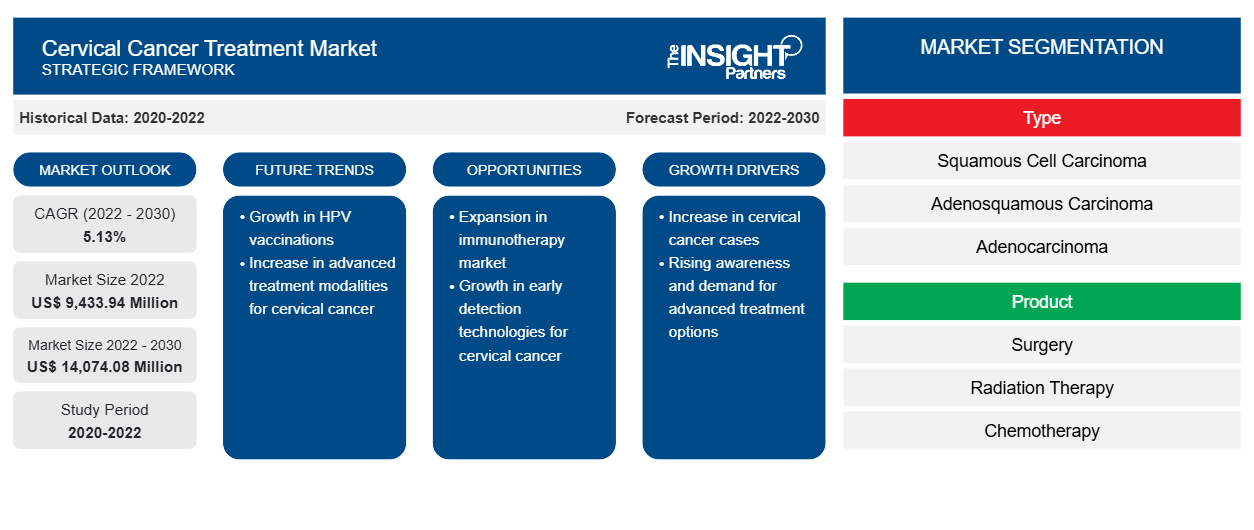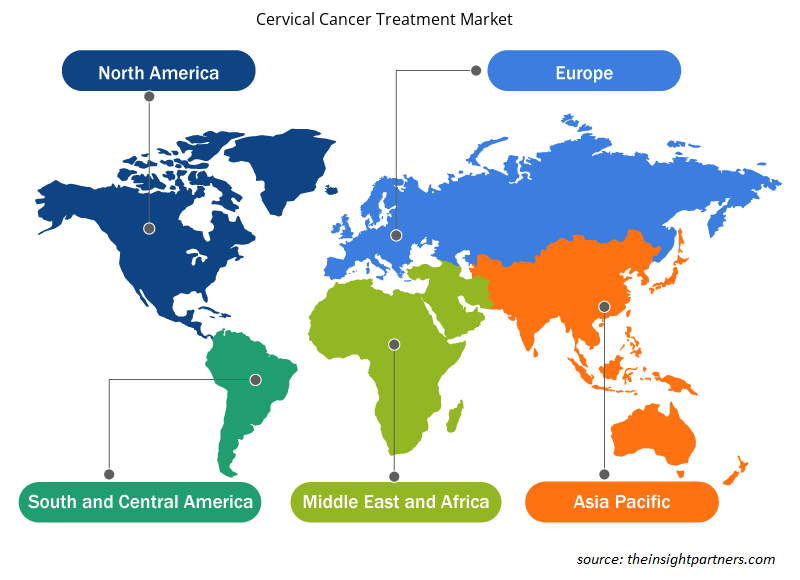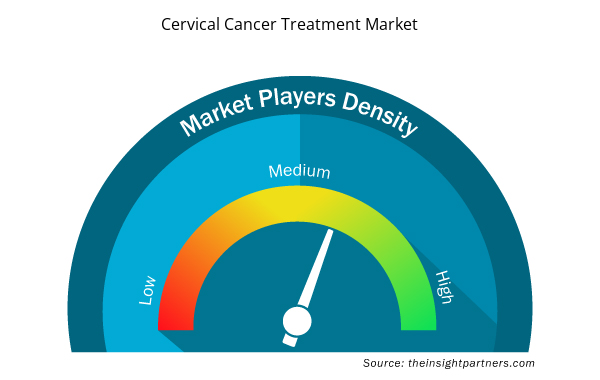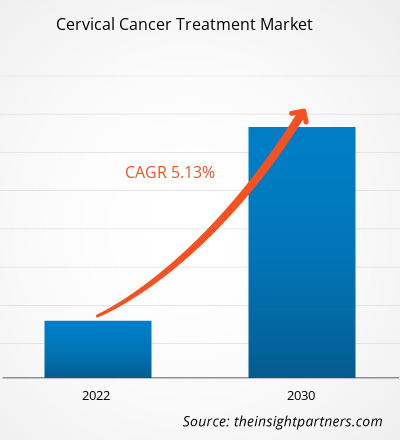[Informe de investigación] Se proyecta que el mercado de tratamiento del cáncer de cuello uterino crecerá de US$ 10,26 mil millones en 2024 a US$ 14,91 mil millones en 2031; se anticipa que el mercado registre una CAGR de 5,7% entre 2025 y 2031.
Perspectivas del mercado y opinión de los analistas:
El pronóstico del mercado de tratamiento del cáncer de cuello uterino puede ayudar a las partes interesadas a planificar sus estrategias de crecimiento.
El cáncer de cuello uterino se refiere al cáncer que se produce en las células del cuello uterino, es decir, la parte inferior del útero que conecta con la vagina. En el 90% de los casos, las neoplasias malignas de cuello uterino se deben a la infección por VPH y se diagnostican mediante citología vaginal. La creciente prevalencia del cáncer de cuello uterino y el aumento de las infecciones por VPH son factores clave que impulsan el crecimiento del mercado de tratamiento del cáncer de cuello uterino. Sin embargo, la falta de conocimiento sobre los métodos de diagnóstico y tratamiento obstaculiza el crecimiento del mercado. Las tendencias del mercado de tratamiento del cáncer de cuello uterino incluyen el aumento de la I+D para el diagnóstico y los medicamentos contra el cáncer de cuello uterino.
Factores impulsores del crecimiento y desafíos:
La creciente prevalencia del cáncer de cuello uterino impulsa el mercado de su tratamiento
A nivel mundial, el cáncer se está convirtiendo en una de las principales causas de mortalidad. Según la Organización Mundial de la Salud (OMS), el cáncer fue la principal causa de muerte en personas menores de 70 años en 183 países, mientras que en otros 123 países, fue la cuarta causa más común de muerte a nivel mundial en 2019. Además, según datos publicados por la Organización Mundial de la Salud en marzo de 2021, casi 10 millones de muertes en 2020 se atribuyeron a diversas formas de cáncer. El mercado en cuestión ha mostrado una expansión significativa, lo cual puede vincularse con la creciente frecuencia del cáncer de cuello uterino entre las mujeres de todo el mundo. Según la Organización Mundial de la Salud (OMS), el cáncer de cuello uterino mata a más de 270.000 mujeres cada año. Las tasas de mortalidad por cáncer de cuello uterino son altas en los países más pobres debido al diagnóstico tardío de la enfermedad.
La creciente prevalencia del cáncer de cuello uterino ha supuesto una carga para los sistemas de salud a nivel mundial. Según el Centro Internacional de Investigaciones sobre el Cáncer (CIIC), se estima que la carga mundial de nuevos casos de cáncer alcanzará los 27,5 millones, y es probable que la enfermedad cause 163 millones de muertes para 2040. Se prevé que factores como los cambios en el estilo de vida, el tabaquismo, la reducción de la actividad física y la incertidumbre sanitaria y climática aumenten la carga mundial del cáncer en los próximos años. Por lo tanto, controlar y prevenir el creciente número de cánceres a nivel mundial es esencial.
La falta de concienciación sobre el cáncer de cuello uterino entre la población, los profesionales sanitarios y los responsables de la formulación de políticas; el acceso limitado a servicios de salud de alta calidad y a programas de cribado cervical; y la falta de sistemas de derivación eficaces se encuentran entre los factores que contribuyen a la alta incidencia y mortalidad por cáncer de cuello uterino. La incidencia y la mortalidad por cáncer de cuello uterino han disminuido en los países industrializados gracias a un mejor acceso al cribado citológico y al tratamiento rápido de las lesiones cervicales tempranas. Es fundamental implementar el cribado cervical poblacional y aumentar su aceptación en los países de ingresos bajos y medianos (PIBM) para reducir la mortalidad por cáncer de cuello uterino. Concientizar sobre factores de riesgo como la primera relación sexual a una edad temprana y tener múltiples parejas sexuales masculinas; el alto riesgo asociado con los tipos 8, 9 y 10 del VPH; el primer embarazo a término a una edad temprana; el uso prolongado de anticonceptivos orales ; y las infecciones por VIH puede ayudar a impulsar la participación en los programas de cribado. Un mayor conocimiento de los síntomas del cáncer de cuello uterino, como el sangrado vaginal intermenstrual, el sangrado vaginal posmenopáusico, el sangrado vaginal poscoital, el flujo vaginal fétido y el dolor abdominal bajo, podría ayudar a las mujeres a buscar ayuda temprana. Por lo tanto, la falta de concienciación sobre el cáncer de cuello uterino entre las poblaciones obstaculiza el crecimiento del mercado de tratamiento del cáncer de cuello uterino.
Recibirá personalización de cualquier informe, sin cargo, incluidas partes de este informe o análisis a nivel de país, paquete de datos de Excel, así como también grandes ofertas y descuentos para empresas emergentes y universidades.
Mercado de tratamiento del cáncer de cuello uterino: Perspectivas estratégicas

- Obtenga las principales tendencias clave del mercado de este informe.Esta muestra GRATUITA incluirá análisis de datos, desde tendencias del mercado hasta estimaciones y pronósticos.
Segmentación y alcance del informe:
Análisis segmentario:
Según el tipo, el mercado se segmenta en carcinoma de células escamosas, carcinoma adenoescamoso y adenocarcinoma. El segmento de carcinoma de células escamosas tuvo la mayor cuota de mercado en el tratamiento del cáncer de cuello uterino en 2022 y se prevé que registre una tasa de crecimiento anual compuesta (TCAC) mayor entre 2022 y 2030. Según el producto, el mercado se clasifica en cirugía, radioterapia , quimioterapia, inmunoterapia y vacunas terapéuticas. Se prevé que el segmento de cirugía tenga una cuota significativa para 2030. En cuanto al usuario final, el mercado se clasifica en hospital, atención domiciliaria, centros oncológicos y otros. En cuanto al usuario final, el segmento hospitalario tuvo la mayor cuota de mercado en el tratamiento del cáncer de cuello uterino en 2022.
Análisis regional:
En términos geográficos, el informe del mercado de tratamiento del cáncer de cuello uterino abarca América del Norte, Europa, Asia Pacífico, Oriente Medio y África, y América del Sur y Central. América del Norte tuvo la mayor cuota de mercado en 2022. En América del Norte, Estados Unidos tiene una participación significativa. Las constantes actividades de I+D, la ayuda financiera de los gobiernos y otras organizaciones públicas y privadas, las colaboraciones entre empresas de TI y farmacéuticas, y la creciente incidencia de enfermedades neurológicas impulsan principalmente el crecimiento del mercado en el país. Además, se prevé que las iniciativas estratégicas del gobierno para mejorar los procedimientos de prueba beneficien al mercado durante el período de pronóstico. La creciente adopción de regulaciones relativas a las enfermedades raras probablemente representará una oportunidad para la expansión del mercado. Por ejemplo, la Sociedad Americana del Cáncer (ACS) revisó los estándares de detección del cáncer de cuello uterino en septiembre de 2020.
Perspectivas regionales del mercado de tratamiento del cáncer de cuello uterino
Los analistas de Insight Partners han explicado detalladamente las tendencias y los factores regionales que influyen en el mercado del tratamiento del cáncer de cuello uterino durante el período de pronóstico. Esta sección también analiza los segmentos y la geografía del mercado del tratamiento del cáncer de cuello uterino en América del Norte, Europa, Asia Pacífico, Oriente Medio y África, y América del Sur y Central.

- Obtenga datos regionales específicos para el mercado de tratamiento del cáncer de cuello uterino
Alcance del informe de mercado sobre el tratamiento del cáncer de cuello uterino
| Atributo del informe | Detalles |
|---|---|
| Tamaño del mercado en 2024 | US$ 10.26 mil millones |
| Tamaño del mercado en 2031 | US$ 14.91 mil millones |
| CAGR global (2025-2031) | 5,7% |
| Datos históricos | 2021-2023 |
| Período de pronóstico | 2025-2031 |
| Segmentos cubiertos | Por tipo
|
| Regiones y países cubiertos | América del norte
|
| Líderes del mercado y perfiles de empresas clave |
|
Densidad de actores del mercado de tratamiento del cáncer de cuello uterino: comprensión de su impacto en la dinámica empresarial
El mercado del tratamiento del cáncer de cuello uterino está creciendo rápidamente, impulsado por la creciente demanda de los usuarios finales debido a factores como la evolución de las preferencias de los consumidores, los avances tecnológicos y un mayor conocimiento de los beneficios del producto. A medida que aumenta la demanda, las empresas amplían su oferta, innovan para satisfacer las necesidades de los consumidores y aprovechan las tendencias emergentes, lo que impulsa aún más el crecimiento del mercado.
La densidad de actores del mercado se refiere a la distribución de empresas o compañías que operan en un mercado o sector en particular. Indica cuántos competidores (actores del mercado) hay en un mercado determinado en relación con su tamaño o valor total.
Las principales empresas que operan en el mercado de tratamiento del cáncer de cuello uterino son:
- F. Hoffmann-La Roche Ltd
- Merck Sharp
- Corporación Dohme
- GlaxoSmithKline plc.
- Genentech, Inc.
- Amgen Inc.
Descargo de responsabilidad : Las empresas enumeradas anteriormente no están clasificadas en ningún orden particular.

- Obtenga una descripción general de los principales actores clave del mercado de tratamiento del cáncer de cuello uterino
Desarrollos de la industria y oportunidades futuras:
El análisis del mercado del tratamiento del cáncer de cuello uterino se realiza mediante la identificación y evaluación de los actores clave del mercado. A continuación, se enumeran algunas iniciativas de estos actores:
- En enero de 2024, Pfizer Inc. y Genmab A/S anunciaron que la Administración de Alimentos y Medicamentos de los Estados Unidos (FDA) había aceptado la Solicitud Suplementaria de Licencia para Productos Biológicos (sBLA) para convertir la aprobación de TIVDAK (tisotumab vedotin-tftv) en el tratamiento de pacientes con cáncer de cuello uterino recurrente o metastásico cuya enfermedad progresa durante o después del tratamiento de primera línea. Con la fecha límite de la Ley de Tarifas para Usuarios de Medicamentos con Receta (PDUFA) del 9 de mayo de 2024, la solicitud ha recibido una Revisión Prioritaria.
- En septiembre de 2023, Guangzhou Gloria Biosciences (GloriaBio) anunció la aprobación para la comercialización de la inyección de zimberelimab (YuTuo, GLS-010), un anticuerpo monoclonal anti-PD-1 totalmente humano, por parte de la Administración Nacional de Productos Médicos de China (NMPA). Esta inyección puede utilizarse como monoterapia para el tratamiento de pacientes con cáncer de cuello uterino recurrente o metastásico (CC R/M). El tercer anticuerpo inhibidor de puntos de control inmunitario (ICI) aprobado a nivel mundial para el tratamiento del cáncer de cuello uterino es zimberelimab, el primero y único autorizado en China.
Panorama competitivo y empresas clave:
F. Hoffmann-La Roche Ltd, Merck Sharp, Dohme Corp., GlaxoSmithKline plc., Genentech Inc., Amgen Inc., Advaxis Inc., Biocon, Allergan Inc., Pfizer Inc. y AstraZeneca son algunas de las empresas clave que se describen en el informe del mercado del tratamiento del cáncer de cuello uterino. Estas empresas se centran en ampliar su oferta para satisfacer la creciente demanda mundial de los consumidores. Su presencia global les permite atender a numerosos clientes, lo que les permite ampliar su presencia en el mercado.
- Análisis histórico (2 años), año base, pronóstico (7 años) con CAGR
- Análisis PEST y FODA
- Tamaño del mercado Valor/volumen: global, regional, nacional
- Industria y panorama competitivo
- Conjunto de datos de Excel


- Surgical Gowns Market
- Redistribution Layer Material Market
- Saudi Arabia Drywall Panels Market
- Aquaculture Market
- Health Economics and Outcome Research (HEOR) Services Market
- Third Party Logistics Market
- Rugged Phones Market
- Vision Guided Robotics Software Market
- Malaria Treatment Market
- Glycomics Market

Report Coverage
Revenue forecast, Company Analysis, Industry landscape, Growth factors, and Trends

Segment Covered
This text is related
to segments covered.

Regional Scope
North America, Europe, Asia Pacific, Middle East & Africa, South & Central America

Country Scope
This text is related
to country scope.
Preguntas frecuentes
The cervical cancer treatment market has major market players, including F. Hoffmann-La Roche Ltd, Merck Sharp, Dohme Corp., GlaxoSmithKline plc., Genentech Inc., Amgen Inc., Advaxis Inc., Biocon, Allergan Inc., Pfizer Inc., and AstraZeneca.
The cervical cancer treatment market was valued at US$ 10.26 billion in 2024
Based on product, the market is divided into surgery radiation therapy, chemotherapy, immunotherapy, and therapeutic vaccines..
Cervical cancer refers to the cancer that occurs in the cells of the cervix, i.e., the lower part of the uterus that connects to the vagina. In 90% of the cases, cervical malignancies occur due to the HPV infection and are diagnosed through smear screening.
The increasing prevalence of cervical cancer and the rise in HPV infections are the key factors driving the cervical cancer treatment market growth. However, the lack of awareness about the diagnosis and treatment methods hampers the growth of the market. Cervical cancer treatment market trends include the increasing R&D for cervical cancer diagnosis and drugs
The cervical cancer treatment market is expected to be valued at US$ 14.91 billion in 2031.
Based on type, the cervical cancer treatment market is segmented into squamous cell carcinoma, adenosquamous carcinoma, and adenocarcinoma. The squamous cell carcinoma segment held a larger cervical cancer treatment market share in 2022 and is anticipated to register a higher CAGR during 2022–2030.
The List of Companies - Cervical Cancer Treatment Market
- F. Hoffmann-La Roche Ltd
- Merck Sharp
- Dohme Corp.
- GlaxoSmithKline plc.
- Genentech, Inc.
- Amgen Inc.
- Advaxis, Inc.
- Biocon
- Allergan, Inc
- Pfizer Inc
- AstraZeneca
The Insight Partners performs research in 4 major stages: Data Collection & Secondary Research, Primary Research, Data Analysis and Data Triangulation & Final Review.
- Data Collection and Secondary Research:
As a market research and consulting firm operating from a decade, we have published and advised several client across the globe. First step for any study will start with an assessment of currently available data and insights from existing reports. Further, historical and current market information is collected from Investor Presentations, Annual Reports, SEC Filings, etc., and other information related to company’s performance and market positioning are gathered from Paid Databases (Factiva, Hoovers, and Reuters) and various other publications available in public domain.
Several associations trade associates, technical forums, institutes, societies and organization are accessed to gain technical as well as market related insights through their publications such as research papers, blogs and press releases related to the studies are referred to get cues about the market. Further, white papers, journals, magazines, and other news articles published in last 3 years are scrutinized and analyzed to understand the current market trends.
- Primary Research:
The primarily interview analysis comprise of data obtained from industry participants interview and answers to survey questions gathered by in-house primary team.
For primary research, interviews are conducted with industry experts/CEOs/Marketing Managers/VPs/Subject Matter Experts from both demand and supply side to get a 360-degree view of the market. The primary team conducts several interviews based on the complexity of the markets to understand the various market trends and dynamics which makes research more credible and precise.
A typical research interview fulfils the following functions:
- Provides first-hand information on the market size, market trends, growth trends, competitive landscape, and outlook
- Validates and strengthens in-house secondary research findings
- Develops the analysis team’s expertise and market understanding
Primary research involves email interactions and telephone interviews for each market, category, segment, and sub-segment across geographies. The participants who typically take part in such a process include, but are not limited to:
- Industry participants: VPs, business development managers, market intelligence managers and national sales managers
- Outside experts: Valuation experts, research analysts and key opinion leaders specializing in the electronics and semiconductor industry.
Below is the breakup of our primary respondents by company, designation, and region:

Once we receive the confirmation from primary research sources or primary respondents, we finalize the base year market estimation and forecast the data as per the macroeconomic and microeconomic factors assessed during data collection.
- Data Analysis:
Once data is validated through both secondary as well as primary respondents, we finalize the market estimations by hypothesis formulation and factor analysis at regional and country level.
- Macro-Economic Factor Analysis:
We analyse macroeconomic indicators such the gross domestic product (GDP), increase in the demand for goods and services across industries, technological advancement, regional economic growth, governmental policies, the influence of COVID-19, PEST analysis, and other aspects. This analysis aids in setting benchmarks for various nations/regions and approximating market splits. Additionally, the general trend of the aforementioned components aid in determining the market's development possibilities.
- Country Level Data:
Various factors that are especially aligned to the country are taken into account to determine the market size for a certain area and country, including the presence of vendors, such as headquarters and offices, the country's GDP, demand patterns, and industry growth. To comprehend the market dynamics for the nation, a number of growth variables, inhibitors, application areas, and current market trends are researched. The aforementioned elements aid in determining the country's overall market's growth potential.
- Company Profile:
The “Table of Contents” is formulated by listing and analyzing more than 25 - 30 companies operating in the market ecosystem across geographies. However, we profile only 10 companies as a standard practice in our syndicate reports. These 10 companies comprise leading, emerging, and regional players. Nonetheless, our analysis is not restricted to the 10 listed companies, we also analyze other companies present in the market to develop a holistic view and understand the prevailing trends. The “Company Profiles” section in the report covers key facts, business description, products & services, financial information, SWOT analysis, and key developments. The financial information presented is extracted from the annual reports and official documents of the publicly listed companies. Upon collecting the information for the sections of respective companies, we verify them via various primary sources and then compile the data in respective company profiles. The company level information helps us in deriving the base number as well as in forecasting the market size.
- Developing Base Number:
Aggregation of sales statistics (2020-2022) and macro-economic factor, and other secondary and primary research insights are utilized to arrive at base number and related market shares for 2022. The data gaps are identified in this step and relevant market data is analyzed, collected from paid primary interviews or databases. On finalizing the base year market size, forecasts are developed on the basis of macro-economic, industry and market growth factors and company level analysis.
- Data Triangulation and Final Review:
The market findings and base year market size calculations are validated from supply as well as demand side. Demand side validations are based on macro-economic factor analysis and benchmarks for respective regions and countries. In case of supply side validations, revenues of major companies are estimated (in case not available) based on industry benchmark, approximate number of employees, product portfolio, and primary interviews revenues are gathered. Further revenue from target product/service segment is assessed to avoid overshooting of market statistics. In case of heavy deviations between supply and demand side values, all thes steps are repeated to achieve synchronization.
We follow an iterative model, wherein we share our research findings with Subject Matter Experts (SME’s) and Key Opinion Leaders (KOLs) until consensus view of the market is not formulated – this model negates any drastic deviation in the opinions of experts. Only validated and universally acceptable research findings are quoted in our reports.
We have important check points that we use to validate our research findings – which we call – data triangulation, where we validate the information, we generate from secondary sources with primary interviews and then we re-validate with our internal data bases and Subject matter experts. This comprehensive model enables us to deliver high quality, reliable data in shortest possible time.

 Obtenga una muestra gratuita de este informe
Obtenga una muestra gratuita de este informe